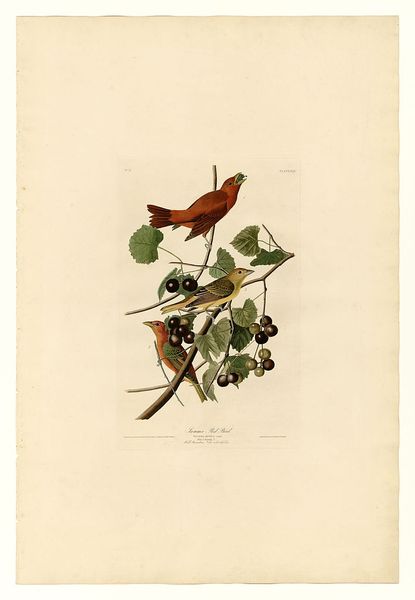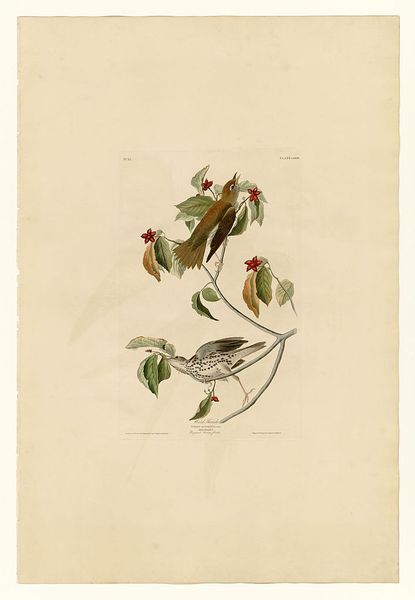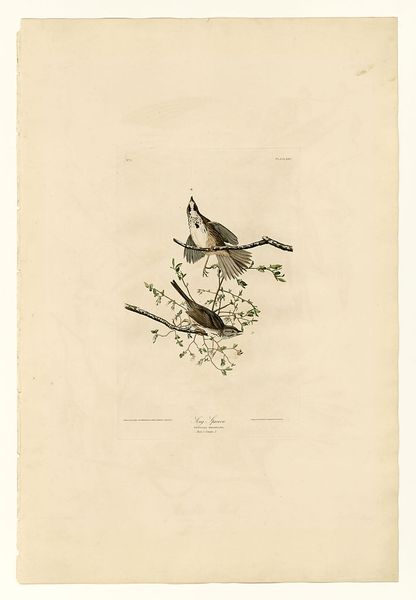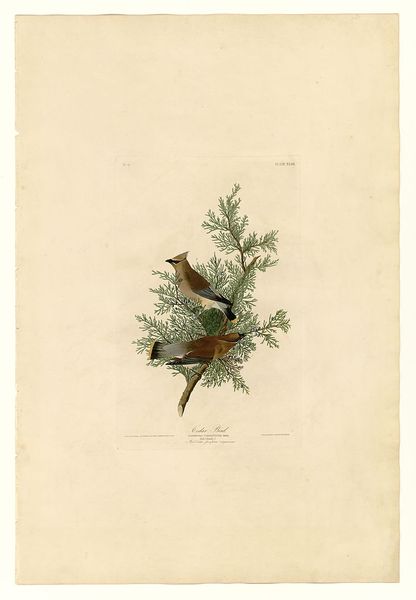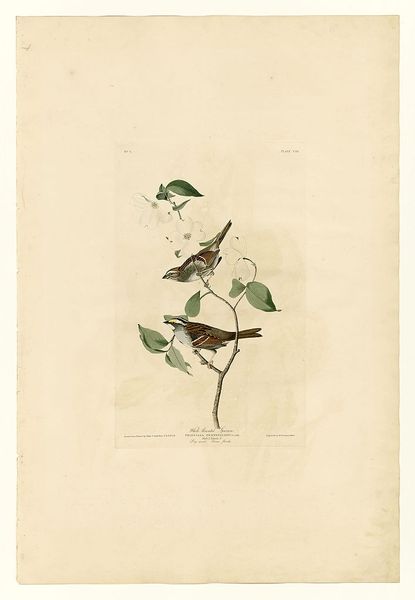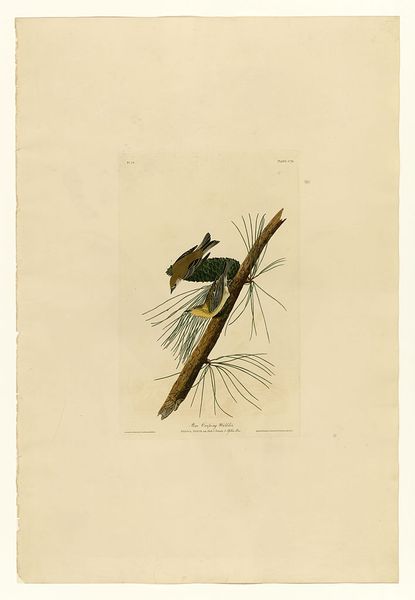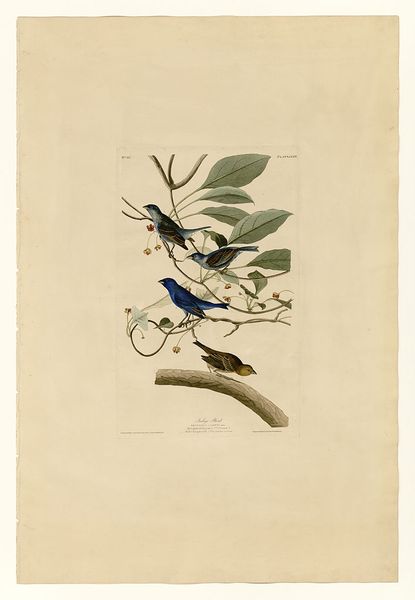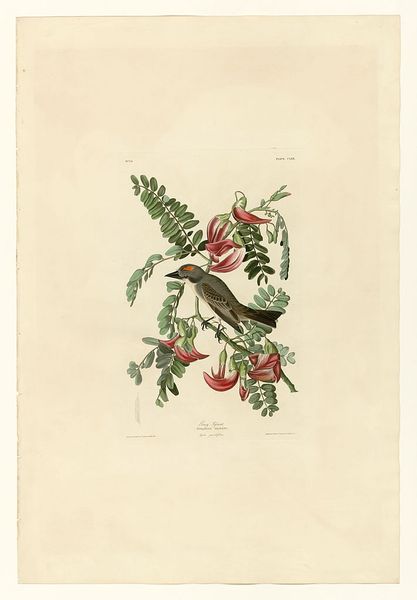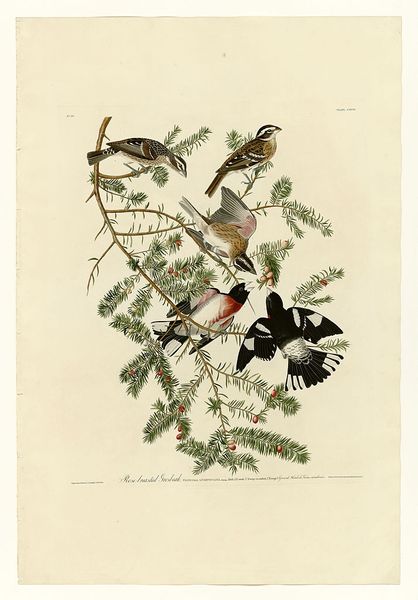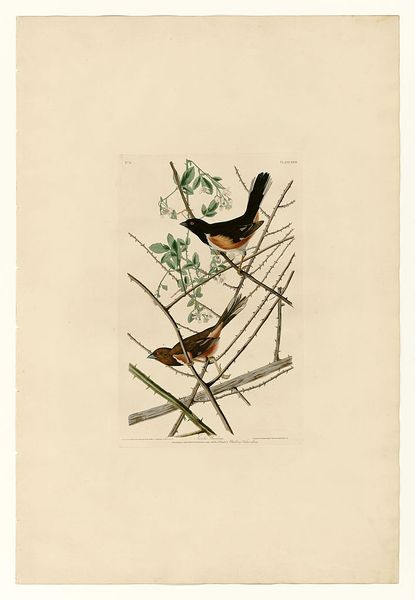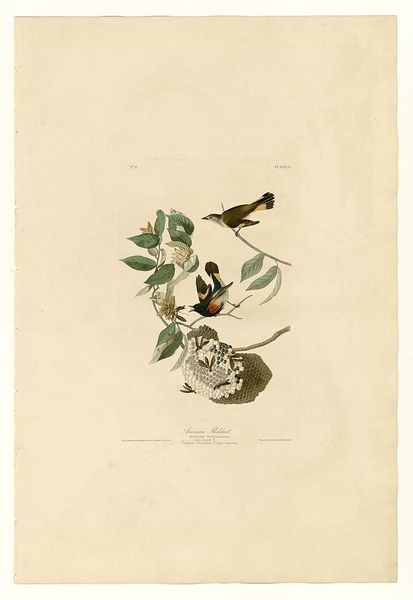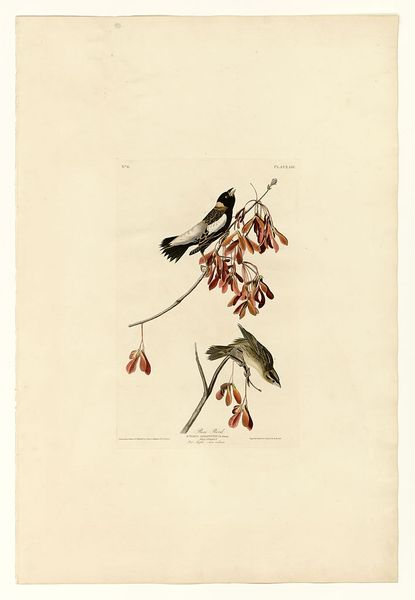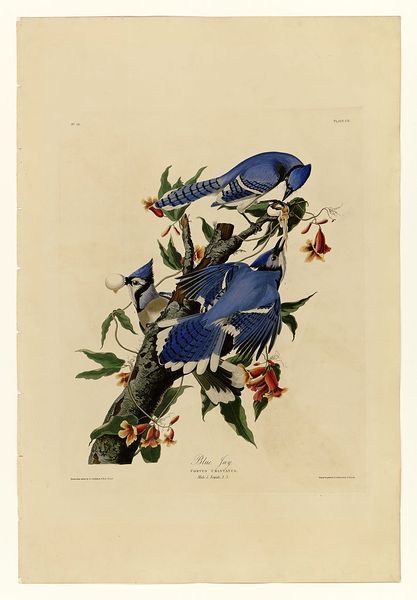
painting, print, watercolor
#
painting
# print
#
impressionism
#
watercolor
#
watercolour illustration
#
history-painting
#
naturalism
Copyright: Public domain
This is John James Audubon's lithograph of Purple Finches, dating from the first half of the 19th century. More than just scientific illustration, Audubon’s images of North American birds are deeply embedded in the social and institutional history of the United States. Consider how the finches are artfully arranged; the branches become geometric vectors rather than naturalistic supports. This blending of science and aesthetics reflects the cultural values of the time, where natural history was both a field of serious study and a source of aesthetic wonder. But what are the politics of this imagery? Audubon sought patronage from wealthy elites to support his expeditions and publications. His work promoted a vision of America as a land of abundant resources, ripe for exploitation. Think about how Audubon’s images contributed to a national narrative of expansion and development, one that often ignored the impact on native populations and ecosystems. To understand this artwork fully, we need to examine field notes, subscription lists, and period reviews. It is through this contextualization that we can appreciate the social forces that shaped Audubon's vision.
Comments
No comments
Be the first to comment and join the conversation on the ultimate creative platform.
